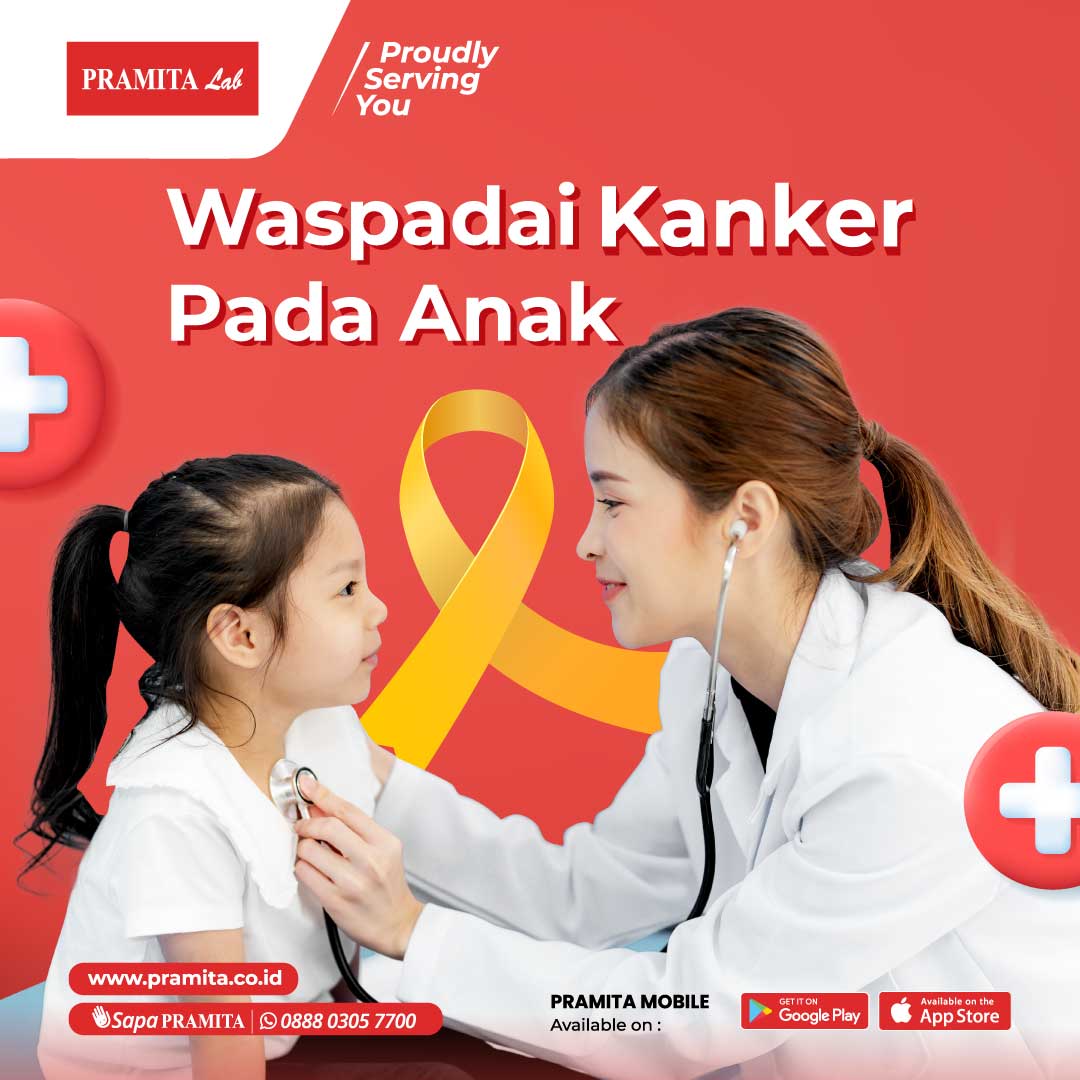Healthy Inspirations

Beware of Childhood Cancer
Wed, 14 Feb 2024According to the WHO, cancer is a large group of diseases that can start in nearly any organ or tissue in the body when abnormal cells grow uncontrollably, surpassing boundaries and typically attacking nearby body parts and/or spreading to other organs. The final process is known as metastasis and is the leading cause of cancer-related deaths. Cancer ranks as the second leading cause of death globally. In 2018, approximately 9.6 million people, or 1 in 6 individuals, succumbed to cancer. Each year, 300,000 new cases of cancer are diagnosed in children aged 0-19 years.
Cancer can affect not only adults but also children. Childhood cancer refers to cancers that strike children between the ages of 0-18, including those still in the womb. According to the Cancer Registry System in Indonesia (SriKanDi) from 2005-2007, the estimated incidence rate of cancer in children aged 0-17 is 9 per 100,000 children, meaning that among 100,000 children, 9 of them may suffer from cancer. The incidence rate is 18 per 100,000 children for ages 0-5 and 10 per 100,000 children for ages 5-14.
Based on the Basic Health Research (RISKESDA) in 2013, the prevalence of cancer in children aged 0-14 is approximately 16,291 cases per year. What's disheartening is that more than 50% of childhood cancer cases that come to healthcare facilities are already in advanced stages. Lack of education and parental knowledge about cancer is one of the reasons for late-stage cancer in children. Early detection of cancer in children can lead to effective treatment and therapy.
The goal of treating childhood cancer is not only to extend life but also to achieve recovery and quality of life in the future. The chances of recovery from childhood cancer heavily depend on the type of cancer, the rate of cancer growth at initial diagnosis, and the timing of treatment.
Childhood cancer differs from cancer in adults. While risk factors, causes, and prevention for adult cancers are known, the same cannot be said for childhood cancers. Currently, there are no specific preventive measures. Nonetheless, a healthy lifestyle and dietary habits should be instilled in children from an early age to help them avoid cancer risks associated with unhealthy lifestyles.
There are several common signs and symptoms that may indicate cancer in children, including:
• Easy fatigue, weakness, susceptibility to infections
• Paleness, bruising/bleeding, and bone pain
• Unexplained lumps or swellings that are painless and fever-free, or other signs of infection
• Unexplained weight loss or unexplained fever, persistent cough, or nighttime sweating
• Changes in the eyes such as the appearance of white spots, squinting, loss of vision, and swelling or bruising around the eyes
• Enlarged abdomen
• Persistent and severe headaches, often accompanied by vomiting, typically in the morning or worsening over time
• Pain in the hands, feet, or bones, leading to swelling without a history of trauma or infection
• Nosebleeds with bloody mucus, frequent nosebleeds, ear pain, and a sense of fullness in the ear
• Loss of motor function in body parts
• Drastic weight loss
Here are the 8 most common cancers in children:
- Leukemia (blood), with an incidence rate of 30-40%, most common in ages 3-6 years.
- Retinoblastoma (eye), with an incidence rate of 20-30%, most common in ages 6 months to 2 years.
- Osteosarcoma (bone), with an incidence rate of 20-30%, most common in ages over 10 years.
- Brain tumors, with an incidence rate of 20-30%, most common in ages over 10 years.
- Lymphoma (lymph nodes), with an incidence rate of 7-15%, most common in ages 6-10 years.
- Neuroblastoma, with an incidence rate of 7-11%, most common in ages 2-4 years.
- Rhabdomyosarcoma (muscle tissue), with an incidence rate of 5-9%, most common in ages 5-6 years.
- Wilms Tumor (kidney), with an incidence rate of 5-7%, most common in ages 2-3 years.
In diagnosing cancer in children, doctors will conduct a medical history review and further examinations related to the child's complaints and symptoms. The specific tests performed will be tailored to the symptoms, including blood tests, blood smears, biopsies, ultrasound, X-rays, CT scans, and MRI scans to aid in diagnosis and disease monitoring.
References:
Ministry of Health of the Republic of Indonesia. 2018. Recognize Early Symptoms of Cancer in Children. Accessed on December 12, 2023, from: https://p2ptm.kemkes.go.id/kegiatan-p2ptm/pusat-/kenali-gejala-dini-kanker-pada-anak
American Cancer Society. Finding Cancer in Children. Accessed on December 13, 2023, from: https://www.cancer.org/cancer/types/cancer-in-children/finding-childhood-cancers-early.html
Ministry of Health of the Republic of Indonesia. 2011. Guidelines for Early Detection of Cancer in Children. Jakarta: Ministry of Health of the Republic of Indonesia.
Ministry of Health of the Republic of Indonesia. 2020. "Recurrent Cancer: Early Detection and Prevention". Accessed on December 16, 2023, from: https://yankes.kemkes.go.id/view_artikel/738/kanker-berulang-recurrence-deteksi-dini-dan-pencegahan#:~:text=Menurut%20WHO%20kanker%20adalah%20sekelompok,atau%20menyebar%20ke%20organ%20lain.
National Cancer Institute. (2021). "What is Cancer?". Accessed on December 16, 2023, from: https://www.cancer.gov/about-cancer/understanding/what-is-cancer
World Health Organization. "Cancer". Accessed on December 16, 2023, from: https://www.who.int/health-topics/cancer#tab=tab_1

